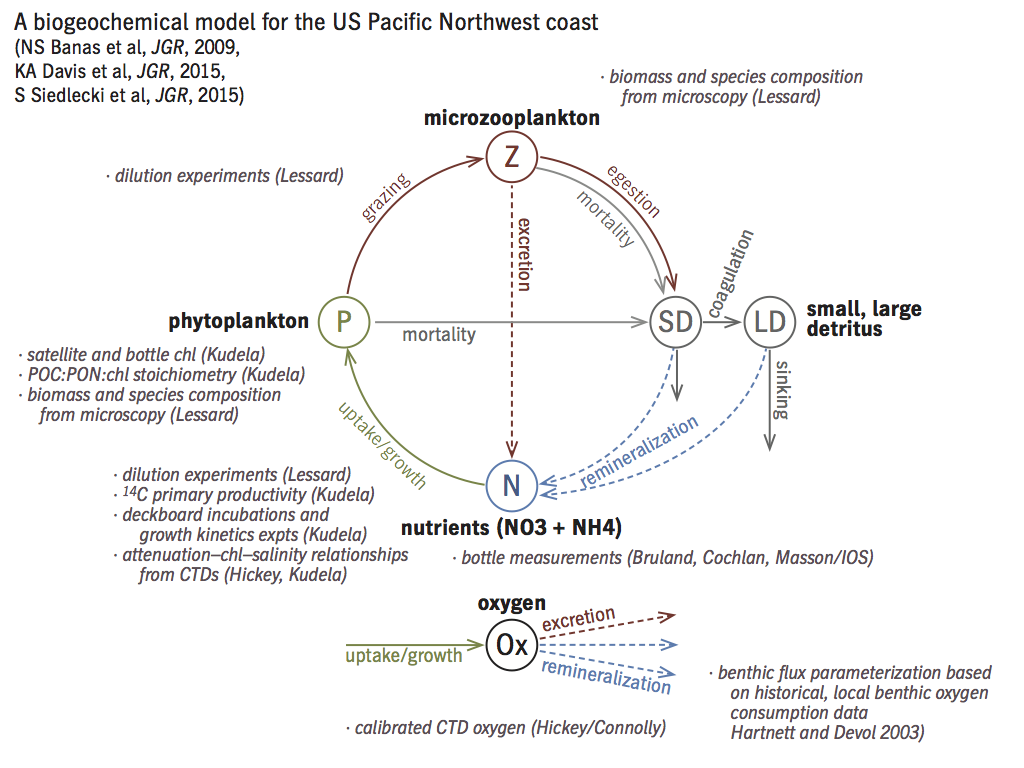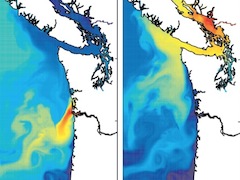The Cascadia model from the Univ of Washington Coastal Modeling Group is a realistic 3D model, implemented in ROMS, of the North American Pacific Northwest coast from mid-Oregon to mid-Vancouver Island, including the inland waters of the Salish Sea. It was developed as part of the NSF/NOAA PNWTOX (Pacific Northwest Toxins) project, based on previous work by our group in the Columbia River plume region and Salish Sea. These three papers document the physics, plankton biology, and oxygen chemistry in the model:
- Giddings SN, MacCready P, Hickey BM, Banas NS, Davis KA, Siedlecki SA, Trainer VL, Kudela RM, Pelland N, Connolly TP (2014) Hindcasts of harmful algal bloom transport on the Pacific Northwest coast. J Geophys Res, doi:10.1002/2013JC009622.
- Davis KA, Banas NS, Giddings SN, Siedlecki S, MacCready P, Hickey BM, Lessard EJ, Kudela RM (2015) Estuary-enhanced upwelling of marine nutrients fuels coastal productivity in the US Pacific Northwest. J Geophys Res, doi:10.1002/2014JC010248.
- Siedlecki SA, Banas NS, Davis KA, Giddings SN, Hickey BM, MacCready P, Connolly TP, Geier S (2015) Seasonal and interannual oxygen variability on the Washington and Oregon continental shelves. J Geophys Res, doi:10.1002/2014JC010254.
See the CMG homepage for further adventures with this model. Meanwhile, here is a beautiful movie of an annual cycle in the model by Sarah Giddings.
The biogeochemistry in the Cascadia model is extremely simple but has been tuned and validated with a wealth of local field observations:
 (click to enlarge). See the Davis et al. and Siedlecki et al. papers above, and also this one…
(click to enlarge). See the Davis et al. and Siedlecki et al. papers above, and also this one…
Banas NS, Lessard E, Kudela R, MacCready P, Peterson T, Hickey BM, Frame E (2009) Planktonic growth and grazing in the Columbia River plume region: A biophysical model study. J. Geophys. Res., 114, C00B06, doi:10.1029/2008JC004993. (download pdf)
which discusses in detail the use of microzooplankton dilution experiments to design the “Z” component of the model.
